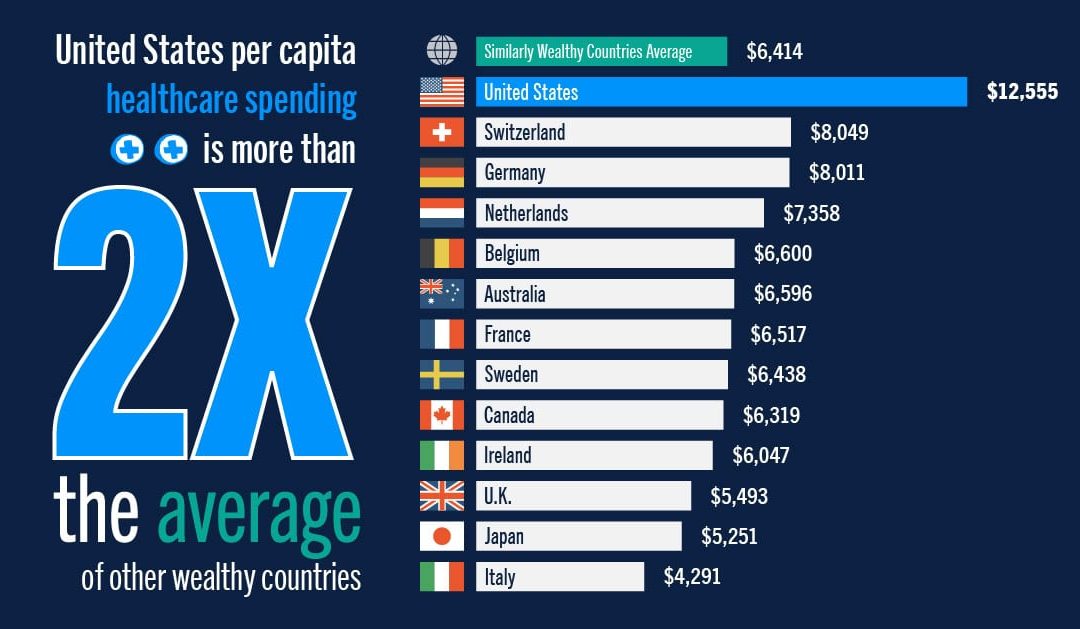Budgeting for What Matters: Navigating Healthcare Costs and Insurance Choices
Theme for October: Wellness, Preparedness, and Financial Protection
Why This Matters
Healthcare is not optional but it can feel unaffordable.
From doctor visits and prescriptions to hospital bills and insurance premiums, navigating the healthcare system can be overwhelming, confusing, and financially devastating.
In fact, medical debt is the leading cause of personal bankruptcy in the U.S. and disproportionately affects women, Black and Brown communities, immigrants, and low-income families.
October during Breast Cancer Awareness Month and Open Enrollment Season is the perfect time to talk about what really matters: your health, your money, and your peace of mind.
Because financial literacy isn’t just about growing wealth it’s about protecting yourself and your family from financial ruin when life happens.
Healthcare and Financial Inequity: The Hidden Crisis
Let’s be clear healthcare costs aren’t just high. They’re often unpredictable, unjust, and inequitably distributed:
-
Black women are more likely to be uninsured and die of preventable illnesses like breast cancer.
-
Latine and immigrant communities often face language barriers and lack access to employer-sponsored insurance.
-
Even middle-class Americans with insurance face skyrocketing deductibles and surprise bills.
These aren’t just policy problems—they’re personal finance problems.
And every informed decision you make—from choosing the right plan to negotiating a bill can help close that gap.
Real-Life Story: Lisa’s Life-Saving Coverage Choice
Lisa, a 52-year-old administrative assistant from Northern Virginia, had gone uninsured for years.
“I never got sick,” she told herself. “I’ll just save the money.”
But in March, Lisa was diagnosed with early-stage breast cancer. Her friend had finally convinced her to sign up for a Bronze ACA plan during the prior open enrollment period. The plan came with a high deductible—but it covered 100% of her chemotherapy and radiation after she hit the out-of-pocket max.
“It was the best decision I didn’t want to make,” Lisa says.
“That plan saved me from $75,000 in medical bills.”
Lisa’s story reminds us:
✅ Insurance isn’t for when you’re sick—it’s for while you’re well.
✅ Prevention isn’t just a health strategy—it’s a financial one too.
What Healthcare Costs Should You Budget For?
Healthcare is a part of life—and should be a line in your budget.
Here’s what to include:
-
Premiums – Monthly cost to maintain your plan
-
Deductibles – Amount you pay before insurance kicks in
-
Copays/Coinsurance – What you pay per visit or treatment
-
Out-of-Pocket Max – The ceiling on how much you’ll pay in a year
-
Prescription Drugs – Always check if your meds are on your plan’s formulary
-
Preventive Care – Most ACA and employer plans cover annual screenings at no cost (including mammograms, pap smears, colonoscopies, and vaccines)
How to Choose the Right Health Insurance Plan
✅ Use your state marketplace or employer portal to compare plans during open enrollment (usually Oct–Dec).
Look at total cost, not just the monthly premium.
✅ Know the Plan Types:
-
HMO – Lower cost, but must stay in-network
-
PPO – More flexibility, usually higher cost
-
HDHP (High Deductible Health Plan) – Low premium, great when paired with an HSA
✅ Check your doctor and meds
Make sure your providers are in-network and prescriptions are covered.
✅ Estimate your annual costs
Add premium + deductible + expected out-of-pocket (exams, therapy, dental, etc.).
✅ Ask your employer about FSAs or HRAs
Flexible Spending Accounts help you set aside pre-tax dollars for medical expenses.
✅ If you’re low-income or uninsured
You may qualify for Medicaid, CHIP, or free care at an FQHC (Federally Qualified Health Center).
Local DMV-Area Resources
-
Maryland Health Connection – Maryland’s official health insurance marketplace
-
DC Health Link – DC’s health insurance exchange for individuals and small businesses
-
Cover Virginia – Virginia’s portal for Medicaid, FAMIS, and ACA coverage
-
HealthCare Access Maryland (HCAM) – Connects residents with insurance enrollment and care coordination
-
Patient Advocate Foundation – Free help with medical billing disputes, insurance appeals, and financial aid for patients
-
⚕️ Find a Community Health Center – Use the HRSA tool to locate federally qualified health centers near you
-
☎️ 2-1-1 Resources – Free, confidential referrals for healthcare, food, housing, and crisis support across the DMV
What You Can Do This Month
Here’s your October Financial Wellness Challenge:
✅ Review your current plan—look at last year’s usage and bills
✅ Write down your open enrollment dates—don’t miss the window
✅ Get a free quote via the ACA marketplace or your employer portal
✅ Call a navigator or benefits counselor for help choosing a plan
✅ Start a Health Savings Account (HSA) or Flexible Spending Account (FSA)
✅ Schedule your preventive care visits before year’s end
✅ Talk to loved ones about their insurance status—and help them get covered
Closing Thoughts
Your health is your greatest asset—but even good health can’t protect you from the cost of unpreparedness.
This October, as we reflect on prevention, pink ribbons, and policy—it’s also time to act:
✅ Know your options.
✅ Budget for your health.
✅ Make decisions that protect your peace, not just your paycheck.
Because true wellness includes financial protection.
Dr. Bertrand Fote, MD, MBA, CF2
Certified Financial Fiduciary® | Emergency Physician | Advocate for Health Equity & Financial Wellness

